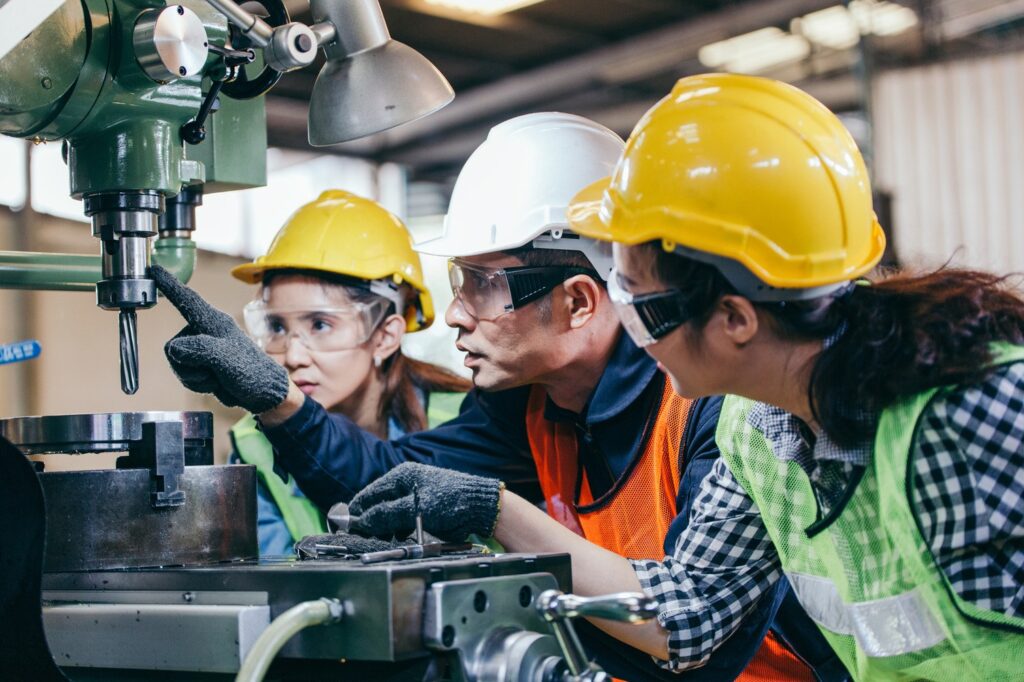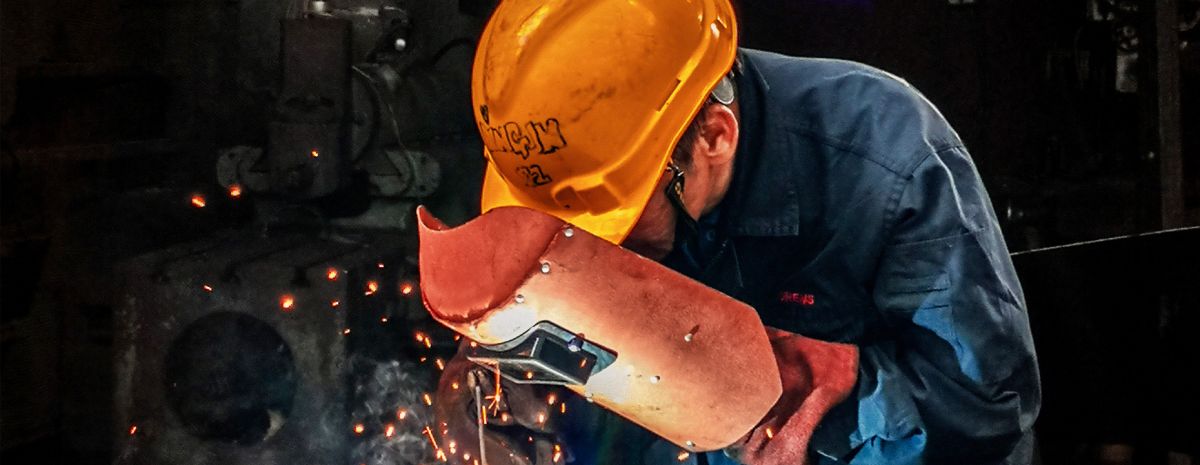TWS is a Great Training Option for Everyone
Learn more about how we can prepare you to advance your career.
Metal fabricators, also sometimes called sheet metal workers, are responsible for building machines and structures from raw metal.
These skilled trades workers use a variety of methods to shape the metal, including cutting, burning, forming and welding. Fabricated metal products can be anything from hand railings in buildings to appliances in homes.
Did you know that metal fabrication is a rich and varied industry? Here are 5 interesting facts about the world of fabricating metals:
1. Metal Fabrication Dates Back to 1,500 BCE
Early eras in human history are named for the raw materials that homo sapiens used to make tools. These were the Stone Age (10,000-4,500 BCE), the Bronze Age (2,300-700 BCE) and the Iron Age (1,500 BCE-100 AD). You can learn much about the history of welding and metal fabrication from these eras.
Have You Considered a Career in the Skilled Trades?
Fill out the form to recieve a no obligation info packet.
While bronze was known to be manipulated into swords and armor, the modern age of metal fabrication is thought to have begun around 1,500 BCE with the start of the Iron Age. This is when humans began using smelting processes to turn iron and other metals into weapons, armor and infrastructure.
Metal fabrication really began to heat up between 1400-1600 CE. This is when technological advances began allowing for more standardization and production, which continued well into the Industrial Era.
2. It’s Possible to Weld in Space
Did you know that just 31 seconds spent outside of Earth’s atmosphere is enough to completely destroy the physical human body? So if an astronaut needs to venture outside the space craft to do a welding repair, the stakes are high.
The first space welding mission was undertaken by Russian cosmonauts named Georgi Shonin and Valeri Kubasov in 1969. One of the tests was nearly fatal: Kubasov almost accidentally burned through the hull of their Soviet Soyuz 6 space craft.
Welding in space has its challenges, but laser beam welding has been used recently. This is a compact, accurate and relatively easy welding technique that astronauts can use if they need to make an emergency extraterrestrial repair. Still, fabricating the metal used in space crafts is more often done on the ground, and not in space!

New: Industrial Maintenance
Learn About Our New Advanced Industrial Maintenance Program
Tulsa Welding School is proud to announce our newest program offering available at our Houston & Dallas Metro Campuses – Advanced Industrial Maintenance Technology! Learn the skills you need to take on the industries of manufacturing, distribution, energy production and facility maintenance in as few as 7 months.
3. Fabricating Metal Houses Could Help Save Trees
Environmentally conscious homeowners may be happy to learn that building a home with a steel frame, rather than a wood frame, could save trees! Steel framing was once primarily used only in industrial and commercial buildings, but this style of architecture is becoming more popular with residential homes.
Steel is recyclable, which means it could have a longer life cycle than one-time use materials, such as wood or plastic. Some would argue that steel is even the most recycled material worldwide.
However, the most environmentally friendly aspect of steel when it comes to construction is that the more steel is used in buildings, the fewer trees need to be cut down and harvested.
Replacing wood frames with steel fabrication could be one way to reduce the harmful effects of deforestation.
4. Puddling Allowed Wrought Iron to Be Widely Produced
The Industrial Revolution changed the world in many ways, one of which was making wrought iron available on a mass scale through a process called puddling.
Puddling was invented in 1784 and was widely used throughout the late 19th century. The Bessemer method eventually replaced puddling because it produced steel for less effort, time and money.
Puddling is a method of converting pig iron, or crude iron that has been through a blast furnace, into wrought iron, a tougher form of commercial iron that is malleable and relatively soft. Puddling involved stirring molten iron in a furnace with a consumable rod, which required great skill, strength and endurance from the workmen.
Today, wrought iron can be found in objects like a wrought iron fence or wrought iron chair.
5. Iron Is the Most Abundant Metal on Earth
Iron is the most abundant element, by mass, on the entire planet! It’s estimated that there are about 800 billion tons of iron ore across the globe.
“Iron ore” is a term to describe iron rocks that can be used economically by humans. Iron ore is what eventually becomes steel after it is smelted in a blast furnace. This process removes impurities and adds carbon. Steel can be defined as iron alloyed with carbon.
According to the University of Waterloo, iron accounts for about 95% of all metals used by industrial society, and almost 98% of iron ore is used to make steel. Steel is one of the primary metals used by metal fabricators to make all sorts of modern products, such as rain gutters, air conditioning units, outdoor signs and so much more.
How Metal Fabricators Get Started
Metal fabrication is a career that doesn’t require a college degree. Instead, the trade can be learned through technical training, such as in vocational training programs, through apprenticeships and on the job.
Some manufacturers even work with technical programs to train students specifically for work in their factories.
Tulsa Welding School offers welding training programs with flexible class schedules and some scholarship opportunities. To learn more about enrollment, call 1-855-437-7711.
This blog has been labeled as archived as it may no longer contain the most up-to-date data. For a list of all current blog posts, please visit our blog homepage at https://www.tws.edu/blog/







